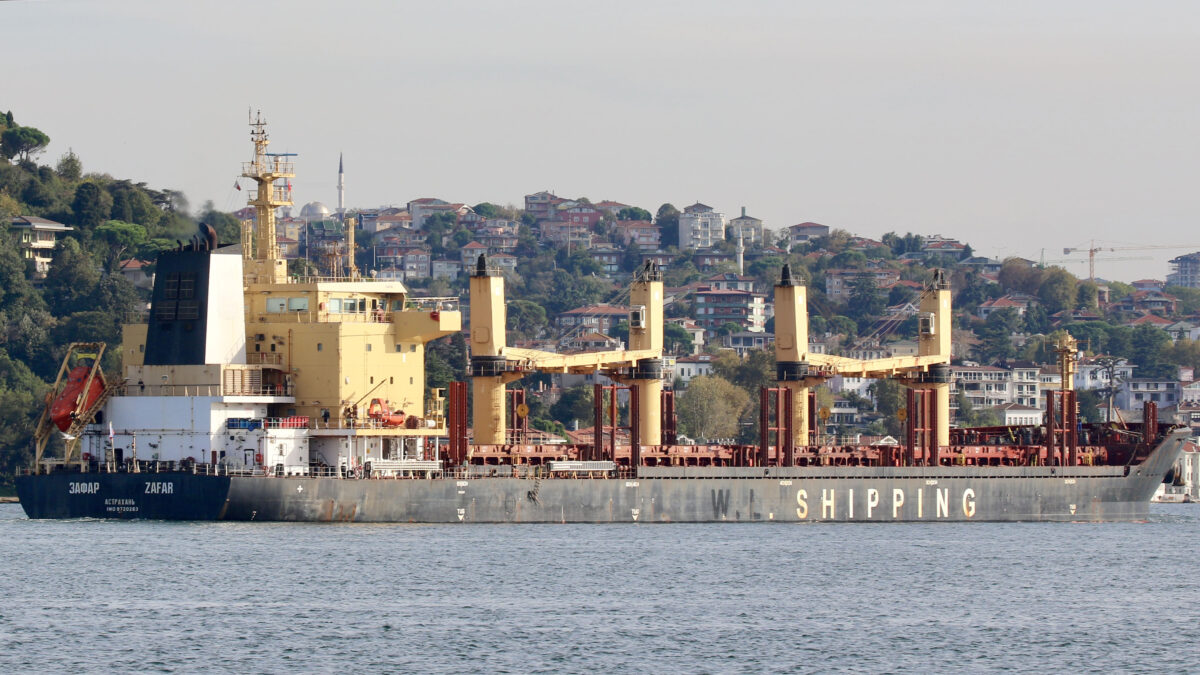How Online Investigators Proved Video of Ukrainian Soldiers Harassing Woman was Staged
A dashcam video shows a green car pull up ahead of the driver, who has just come to a halt on a country road. Two soldiers, in what appear to be Ukrainian military uniforms, pull up. One of them walks up to the driver and berates her for overtaking military vehicles, “scum, do you know the traffic rules? Didn’t you see the convoy?”. Upon hearing that she is a Russian speaker and checking her documents, he demands that she switch to Ukrainian and calls her a “pig”.
After she asks the soldier not to insult her, a loud crash is heard and the woman screams “what are you doing? I have a child!” The soldier then walks in front of the woman’s car and fires his weapon into the air, before rejoining the other soldier in the green vehicle and driving away past the terrified woman.
These are scenes from a video widely circulated by prominent pro-Russian figures and their supporters on social media on March 27. A timestamp on the dashcam video gives the date of the footage as March 24, just after midday.
However, the facade presented by this footage began to crack when online communities attempted to verify its authenticity. While the video shows soldiers speaking Ukrainian and seemingly wearing Ukrainian uniforms, a geolocation shows that the video was actually filmed in areas deep behind the front lines in Russian-controlled territory — an area over which the Ukrainian military has no control.
This is not the first instance of Russian and pro-Russian actors producing and promoting fake videos. Just two days before Russia’s full-scale invasion of Ukraine on February 24, 2022, Bellingcat debunked two such videos. One purported to show an attack by saboteurs on chlorine tanks and another showed the aftermath of a staged IED explosion which supposedly killed civilians.
As the invasion grinds on, communities online have aggressively and quickly moved to fact-check such claims.
“Think 4 Yourself”
One of the earliest, and most prominent, posts about the video came from the Twitter account of the Russian Embassy to the UK, which stressed the additional claim that the soldier identified the woman as a Muslim and that shots can be heard in the video while the Ukrainian soldiers are off-screen.
Soon after, the Twitter account of the Russian Ministry of Foreign Affairs shared the same video, with the hashtags #Think4Yourself and #See4Yourself, stating “Once a Nazi, always a Nazi”.
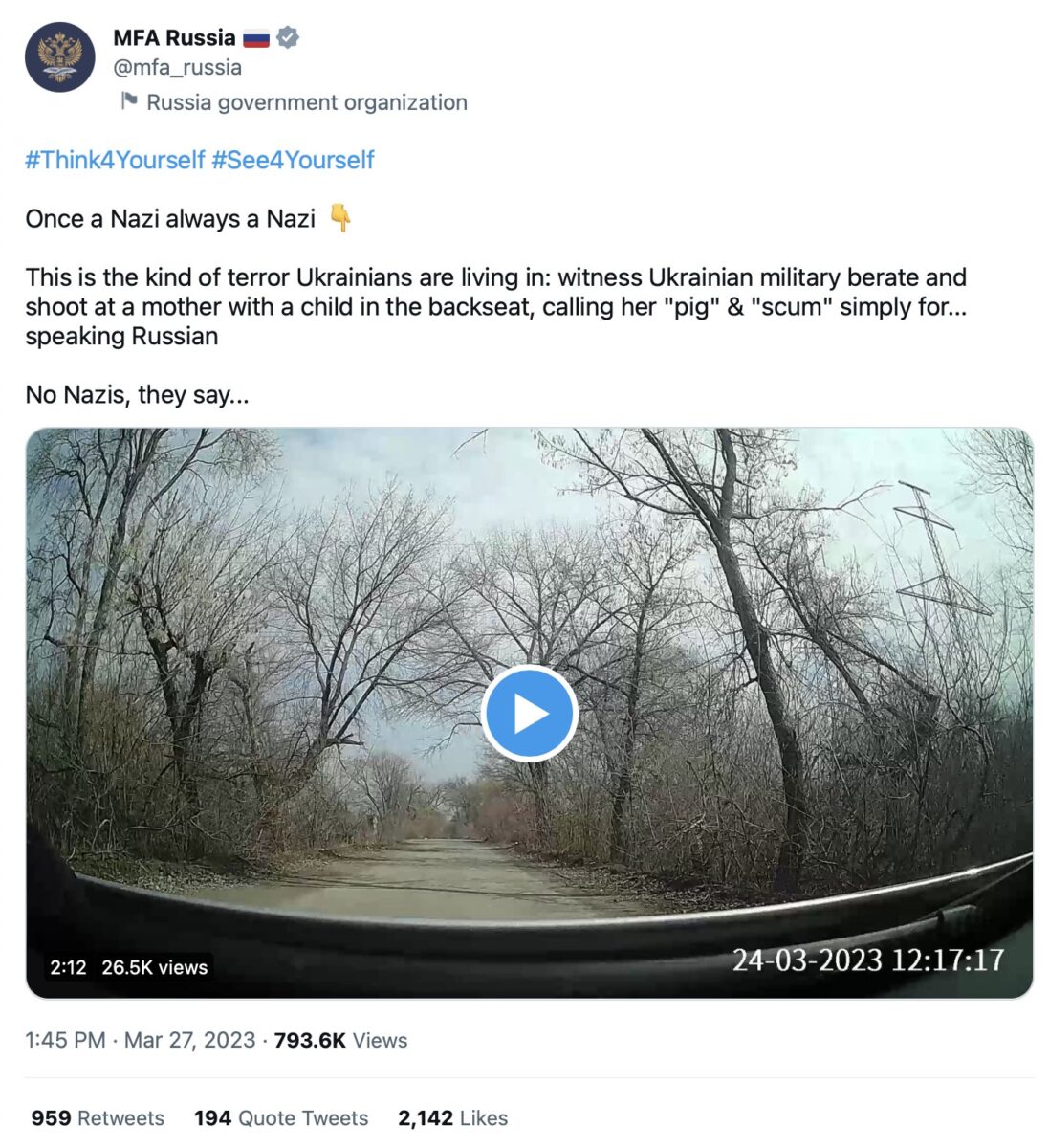
While other media outlets cited a tweet by a pro-Russian Twitter user called Yury Alekseich as the first source of the footage (13:38 CET), Bellingcat discovered an earlier appearance (12:31 CET) on Two Majors, a pro-Russian Telegram channel which regularly posts footage from the frontline in Ukraine.
It was accompanied by several paragraphs describing the video and noting that the woman gives a Muslim first name and surname. The final paragraph draws further inferences from this fact, claiming that:
“The ideology being introduced by the Nazi battalions into all Ukrainian military formations is extremely straightforward: one nation, one faith, one language. Just like the Third Reich, nothing new. It’s very appropriate for the small-minded enemy soldiers who have no idea that March 24 was the first day of the Muslim holy month of Ramadan”.
The video was then shared widely on pro-Russian social media channels, and by Ukraine’s detractors on social media, gathering millions of views across multiple platforms.
Several prominent Russian media outlets reported on the video, including Izvestiya, RenTV and Tsargrad.
Early reactions suggested that the footage, or the way it was presented by pro-Russian actors, was suspicious. Ukrainian social media users were quick to note that dashcams had been banned in the country for nearly a year, in attempts to stop the spread of information about Ukraine’s armed forces.
Online open source communities took note and attempted to geolocate the video. The key piece of information to verify the authenticity of videos and photographs is the exact location where it was recorded. In the context of open source investigations, geolocation refers to the process of identifying the location of an object, event, or individual using publicly available information. This technique allows researchers to gather vital spatial data, enhancing the overall accuracy of an investigation.
They discovered that the footage was not filmed “in the frontline zone” as the Two Majors channel claimed, but approximately 30 kilometres behind it in Russian-controlled territory.
East of Donetsk
On the evening of March 27, the Twitter account of GeoConfirmed, a volunteer community who has been geolocating videos from Russia’s full-scale invasion of Ukraine, published a thread detailing the geolocation of the video to 47.977044, 37.953754.
Tatarigami, a Twitter user who says they are a Ukrainian military officer in reserves, also published a thread that evening reaching the same conclusion.
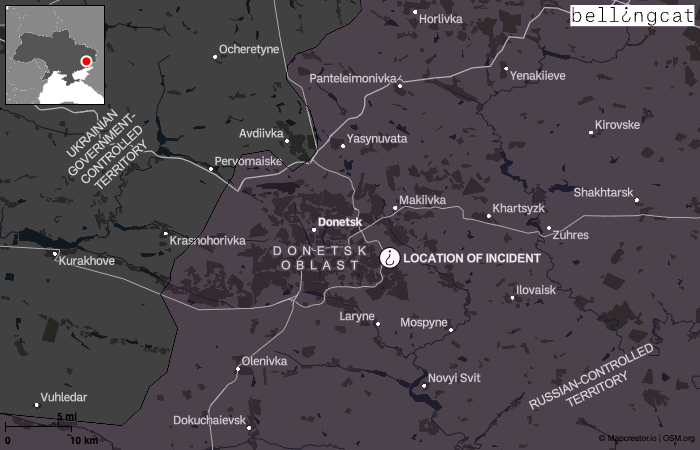
This is a crossroads south-east of Donetsk, the capital of the Donetsk Region of Ukraine which is occupied by Russia as the ‘Donetsk People’s Republic’.
This immediate area has been occupied by Russian forces without interruption since 2014.
Therefore, the ‘military convoy’ that the soldier mentioned would have had to cross one of the most contested and dangerous frontlines in Ukraine and advance 30 kilometres into Russian-occupied territory before accosting this woman for overtaking it.
WarGonzo distributed this video with this text.
— GeoConfirmed (@GeoConfirmed) March 27, 2023
Source: https://t.co/LYhdyqX02U
2/13 pic.twitter.com/M3iMAL3BXq
Shortly after the thread went viral, the Russian Ministry of Foreign Affairs removed their tweet without comment. The Russian Embassy to the UK left their tweet online.
The Moscow Calling Telegram channel also posted satellite imagery of the area. A subscriber whom the channel described as being based in nearby Donetsk then visited the site and provided the channel with a photograph of what he found there, which Moscow Calling shared.
“‘When you’re on reconnaissance, look at the branches’ – folk wisdom from the Finnish War” noted the channel.
Comparing the subscriber’s photograph to a still from the video, it is clear that the tree branches do indeed match.
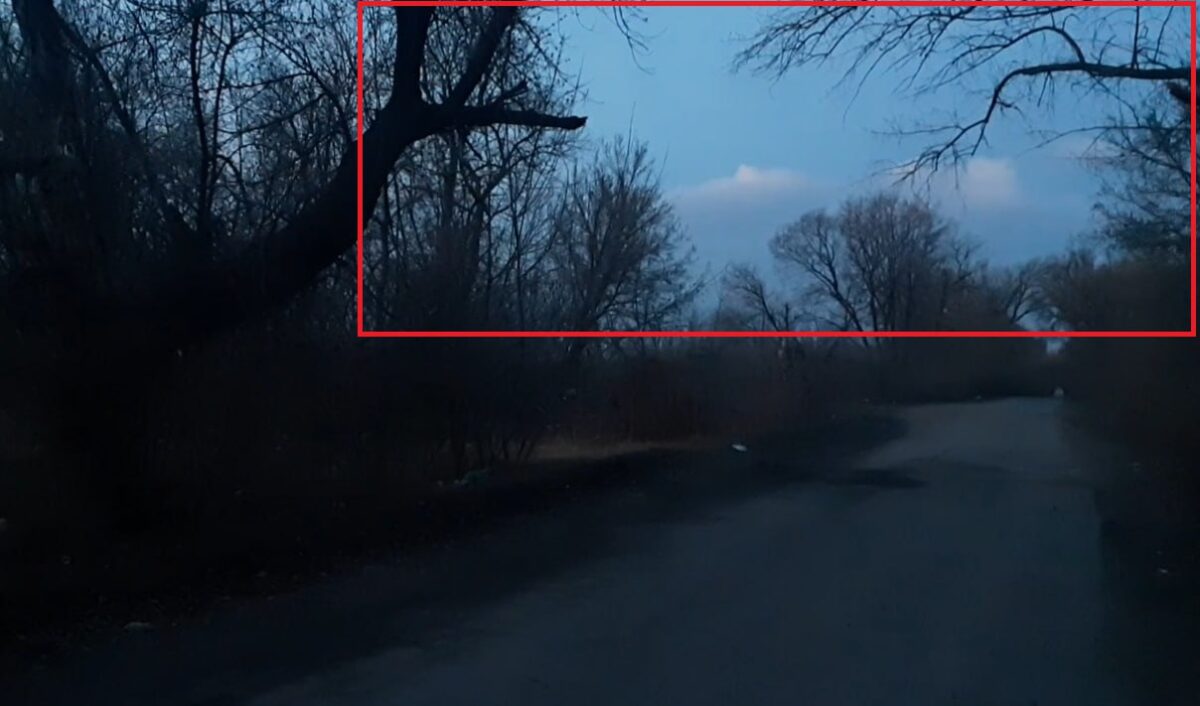
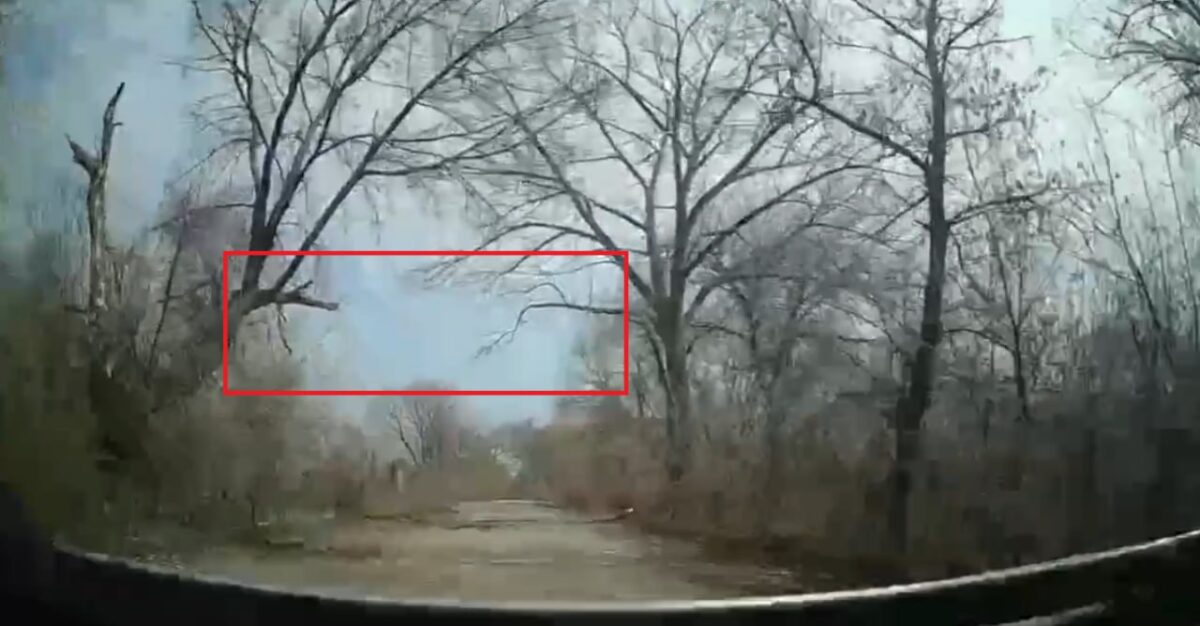
Later, a video was shared on Telegram by the Ukrainian blogger Anatoly Shariy showing dashcam footage of a car travelling from a location in Donetsk towards the site shown. The start of the video can be geolocated to 47.9712, 37.9288, on Komunistychka Street in the suburbs of the city’s southeast.
It is not known how Shariy obtained this video, nor when it was recorded. However, this footage can be matched with street view imagery of the location from 2010 which is available on Yandex Maps.
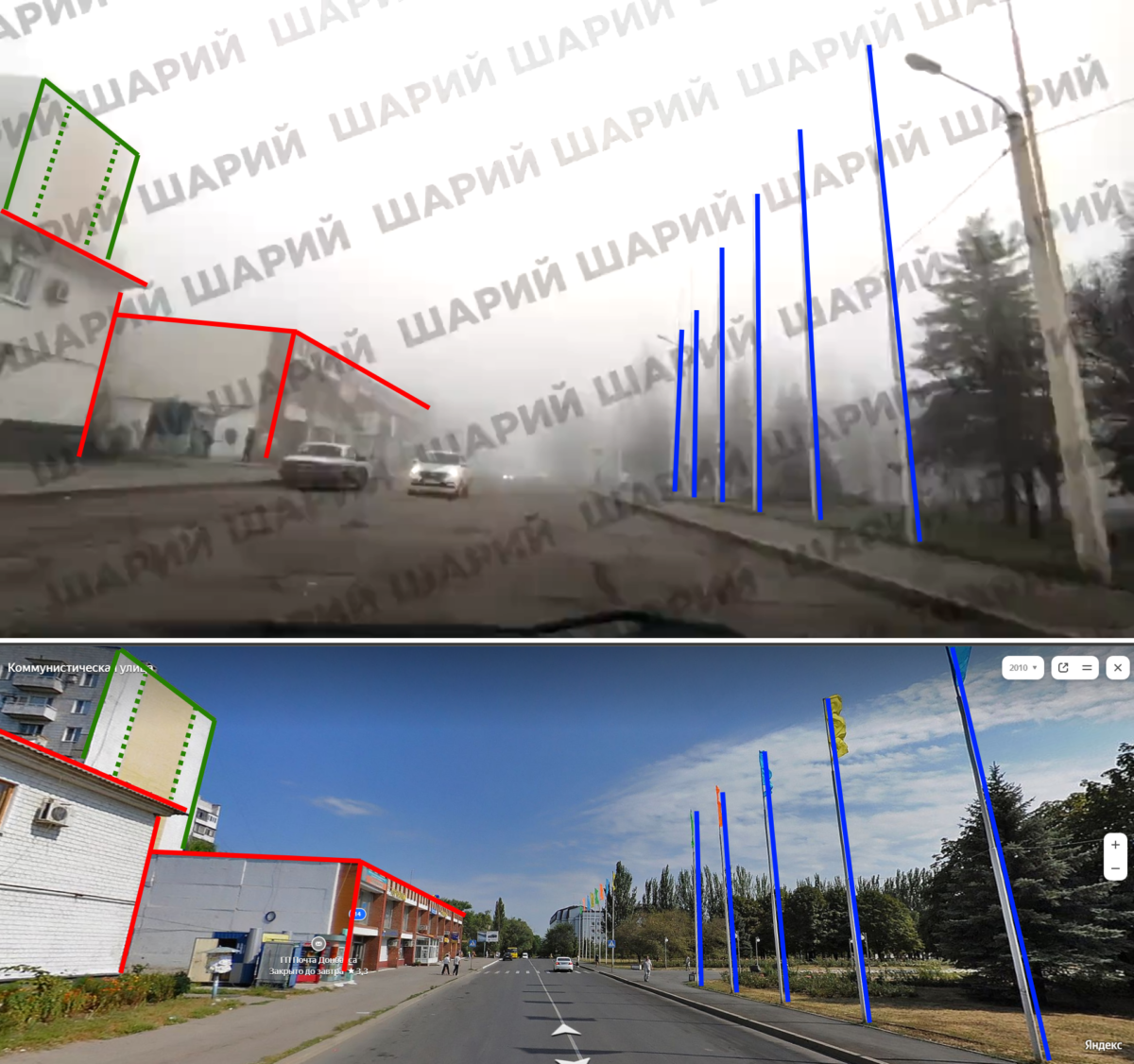
It is then possible to follow the path of the car on satellite imagery until it reaches the exact spot of the previously geolocated March 24 dashcam footage. It is clear from matching features, such as these tree branches, that this is the same location as seen in that staged video.
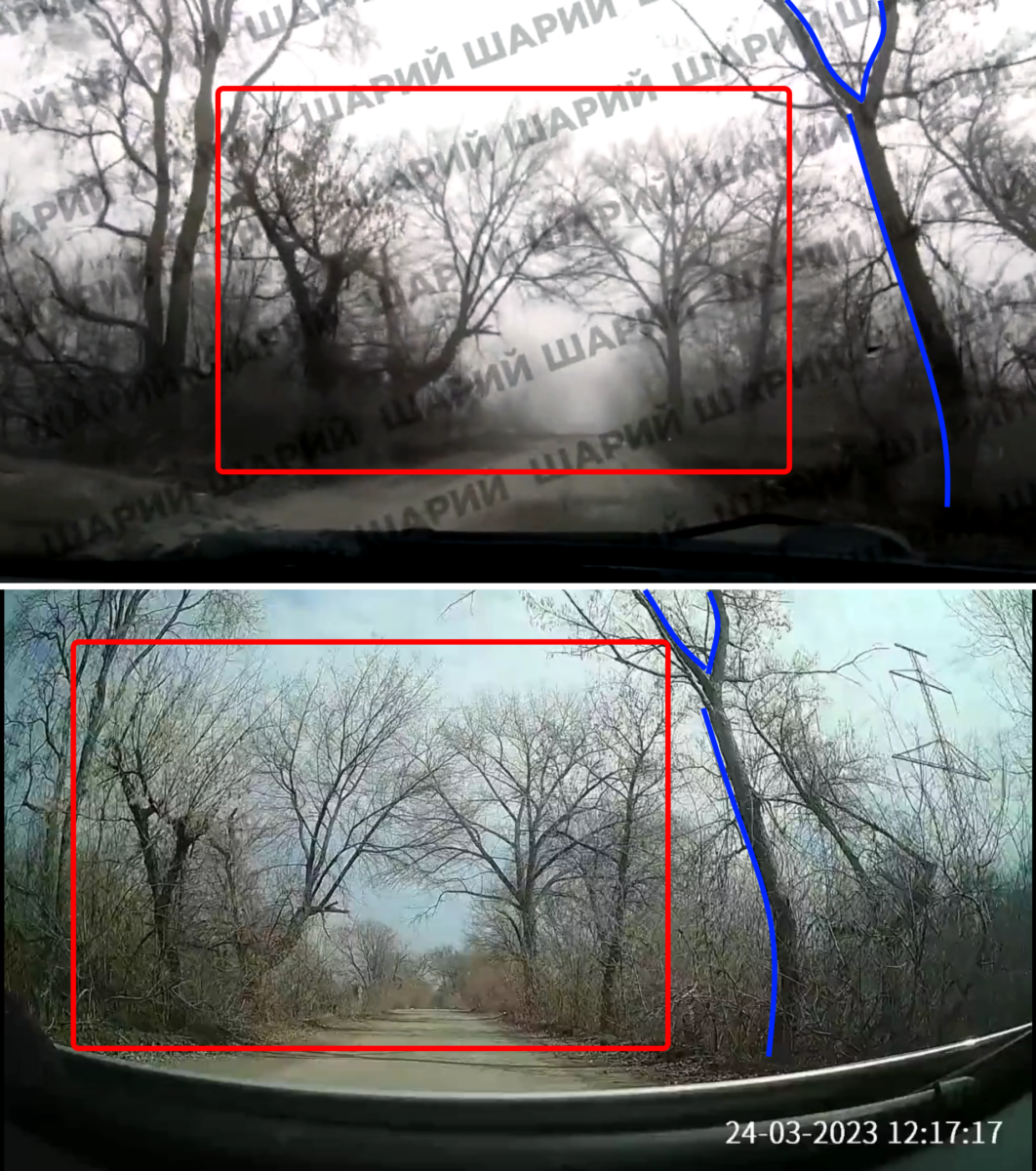
The Walkback
Once the video had been widely debunked, even pro-Russian commentators were quick to disavow it. On the evening of March 27, the prominent Russian military blogger Rybar added an update to an initial Telegram post, reading “the video turned out to be a fake”. Around two hours later, the pro-Russian Telegram channel Zapiski Veterana (which translates to ‘Notes of a Veteran’) posted that “the video is a fake. Our guys aren’t training well. In carrying out such information operations, they still need to learn and learn”.
Two hours after the latter post, the pro-Russian Ukrainian politician Oleg Tsarev wrote on his Telegram channel: “As concerns that video which everybody published. It seemed suspicious to me from the very start. But to write that it is suspicious is to do the enemy’s work. And to share a video about which I have doubts is to mislead my subscribers. So I decided not to post it.”
At the time of publication the Russian Embassy to the UK tweet with the fake video is still online. However, beneath it Twitter has added a Community Note for logged in users reading that “open-source intelligence reports have confirmed that this video was taken in territory in Donetsk that is currently occupied by Russian troops, making this certainly a hoax as there are no Ukrainian troops in the area”, linking to the aforementioned thread by GeoConfirmed.
If anything, this video illustrates the value of geolocation when it comes to verifying the authenticity of a video and the role of online communities in debunking disinformation.
Occasionally, as happened here, some of those who spread false information may choose to walk back their misleading claims — although not all will do so.
The author would like to thank GeoConfirmed for their contributions to this research.
Bellingcat is a non-profit and the ability to carry out our work is dependent on the kind support of individual donors. If you would like to support our work, you can do so here. You can also subscribe to our Patreon channel here. Subscribe to our Newsletter and follow us on Twitter here.

